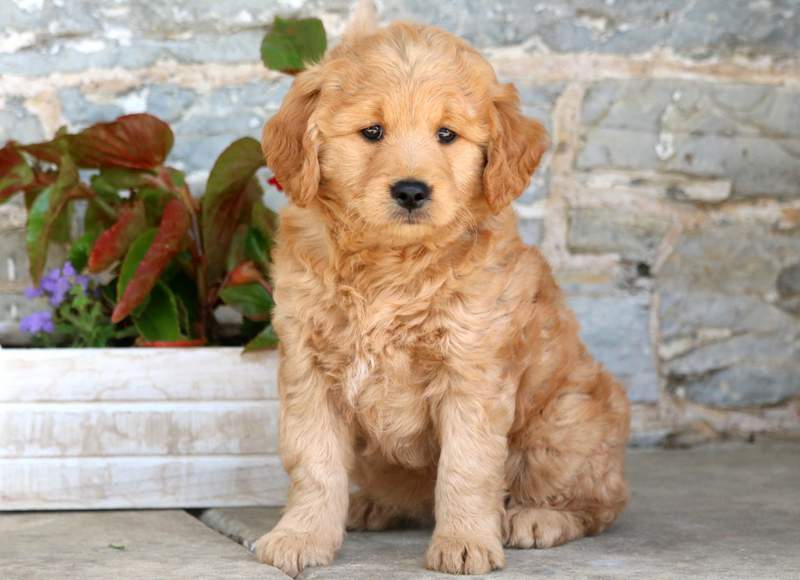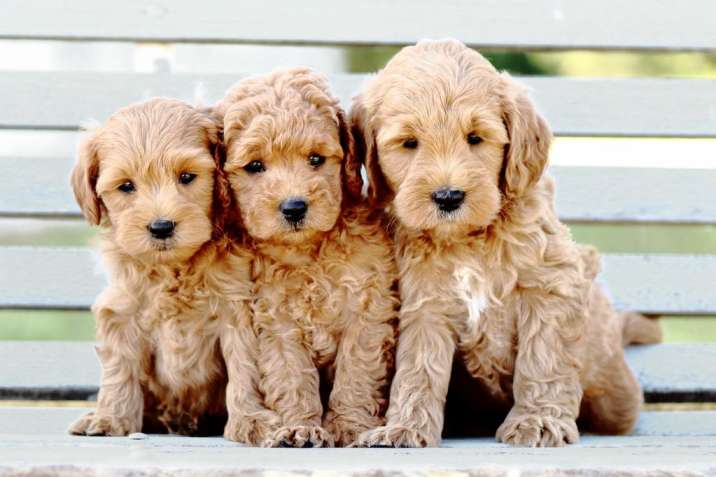Do you want to pick a Goldendoodle for companionship or to keep your home alive? No matter the reasons why you want to pay for a Goldendoodle, the fact is that you have a lot of options to select from.
Connect with a verified veterinarian in minutes. Licensed vets are available 24/7 to answer your questions. No need to worry about your furry family member.
As a cross between a Golden Retriever and a Standard Poodle, Goldendoodles have come a long way to become one of the best pets for dog lovers.
Now, there are up to 5 generations or types of Goldendoodles out there. And in this article, we will explain everything you need to know about these Goldendoodle generations, as well as the factors you must consider at all times so you will pay for the best Goldendoodle.
Goldendoodle Generations and What They Mean
The first thing you want to consider is the generations of Goldendoodles. As mentioned earlier, there are 5 major generations and types of these dogs.
Now, the rule of thumb to understanding these generations is to understand what the letters or alphabets in their names mean.
Here are some of the popular letters in Goldendoodles, and what they mean. We will use the F1B Goldendoodle (which is one of the most popular) for this illustration:
The Meaning of Letter F
You may have seen the letter F in the names of some Goldendoodle dogs. The letter or alphabet therein implies Filial Hybrid.
A Filial Hybrid Goldendoodle is the type that is a result of a crossbreed between two purebred dogs.
The Meaning of Number 1
The number 1, as seen in F1B Goldendoodle means that the dog is the first generation of all other types of Goldendoodles that may be out there.
The Meaning of Letter B
Finally, letter B implies that the Goldendoodle is a backcross. When a Goldendoodle is said to be a backcross (as is the case with F1B Goldendoodle), it implies that the dog was bred into an F1 Goldendoodle before it was bred back to a 100% Standard Poodle.
F1 Goldendoodle
This is not only a first-generation Goldendoodle. It is also one that shares equal genes of the parent dogs – a Standard Poodle and a Goldendoodle Retriever.
While this is the major type or generation of Goldendoodles that come to mind when Goldendoodles are mentioned; they are not the only ones out there.
It will interest you to know that as a hybrid dog, an F1 Goldendoodle tends to share similar traits and genes that are exclusive to the parents – a Golden Retriever and a Standard Poodle.
Features to Consider
An F1 Goldendoodle has a list of impressive characteristics that you cannot wish away when you want to pay for the dog.
Some of the inherent characteristics include but are not limited to:
- Highest qualities of hybrid vigor
- Curly, straight, and wavy hair
- F1 Goldendoodles are predictable in many ways, including coat types, size, and color

Review symptoms, medications & behavior to keep your pets healthy with a Vet Online in just minutes.
Ask a Vet Live NowF1B Goldendoodle
Considering that many dog lovers prefer Goldendoodles that have more of Poodle genetics; it doesn’t come as a surprise that more people are paying for F1B Goldendoodles.
This Goldendoodle generation has up to 75% Poodle genetics and about 25% of Golden Retriever genetics.
Characteristics of F1B Goldendoodle
In terms of the physical compositions, here are some of the things you will like about an F1B Goldendoodle:
Hypoallergenic
While it is quite rare for dogs to be hypoallergenic, it isn’t entirely out of place. An F1B Goldendoodle proves to be close to hypoallergenic because it emphasizes more of Poodle genetics.
Little Shedding
It is a big win for F1B Goldendoodles because they don’t shed much. So, if you have been looking for a dog that doesn’t litter your space, it has to be an F1B Goldendoodle.
F1BB Goldendoodle
When you bred an original purebred of 100% Standard Poodle and 100% Golden Retriever, the result will be an F1BB Goldendoodle.
This Goldendoodle generation is popular for many reasons, including non-shedding, hypoallergenic, and curly coat.
We mustn’t fail to mention that an F1BB Goldendoodle is the most hypoallergenic of all the others on the list because it possesses larger amounts of Standard Poodle genetics. By that, you will not battle with wavy hair, as the hair is now curly for easier grooming.
F2B Goldendoodle
Generally, F2 Goldendoodles are the second generation of Goldendoodles. So, it is safe for you to consider an F2B Goldendoodle a more advanced generation of the F2 Goldendoodle.
Here, we are looking at a Goldendoodle generation that has up to 62.5% genetics of a Standard Poodle and 37.5% of a Golden Retriever.
An F2B Goldendoodle is our favorite Goldendoodle generation because of the hypoallergenic and non-shedding features. You also need to note that there might be some exceptions to this.
F3 Goldendoodle
The rule of thumb in Goldendoodle generations is that crossbreeding between different generations can lead to the birthing of another generation.
For example, an F3 Goldendoodle is a cross between two F2 Goldendoodles. That is not all there is to breeding this type of Goldendoodle generation.
In some cases, breeders want to breed an F3 Goldendoodle with an F2 Goldendoodle and another F2 Goldendoodle.
It is also possible to breed two F1 Goldendoodles to get an F3 Goldendoodle.
No matter the breeding format that was used, the fact is that some breeders want to stay away from breeding an F3 Goldendoodle for some reasons that include:
- Breeding an F3 Goldendoodle usually costs more because of the processes involved
- Some F3 Goldendoodles aren’t real doodles after all. They are just a hybrid of multiple breeds that over time began to take the semblance of a Goldendoodle.
General Considerations for Choosing a Goldendoodle
Despite the disparities in the generations and types of Goldendoodles; the truth is that some factors will help you decide on the type that suits your needs.
Here are some of the general considerations you want to have in mind when paying for a Goldendoodle:
Temperament
As much as a Goldendoodle will keep you company, you also want to be sure that your energy rhymes with that of the dog.
So, you must consider the temperament. A general rule is to pay for a Goldendoodle generation that has more Golden Retriever genetics because that is an excellent way of having an ultra-friendly dog in your home.
Shedding
Except you love to sweep, you wouldn’t want to pay for a Goldendoodle generation that sheds a lot and litters your environment.
In that case, you want to buy an F1B Goldendoodle generation because the shedding is under control.
Coat
Last but not least is the coat or fur of the dog. The less shaggy and curlier the fur/coat is, the fewer beards the dog will have.
Choose the Best Goldendoodle Generation Today
Selecting the best Goldendoodle generation or type shouldn’t be difficult, because this article has highlighted some of the important factors you must consider.
As a Goldendoodle lover, what are some of the attributes you look for and which of the Goldendoodle generations do you think is the best?
Connect with a verified veterinarian in minutes. Licensed vets are available 24/7 to answer your questions. No need to worry about your furry family member.

Kim
Kim is a talented author, who loves animals especially dogs. She engaged in writing books and articles relating to animals a decade ago. Kim resides in Chicago with her husband and son. The family is the proud owner of a dog and a parrot (Jack and Lily). Kim wanted more than these two pets, but her husband put his foot down... She often visits elementary schools to talk to the kids about what she learned about pets and how they could learn from them.
Review symptoms, medications & behavior to keep your pets healthy with a Vet Online in just minutes.
Ask a Vet Live Now



